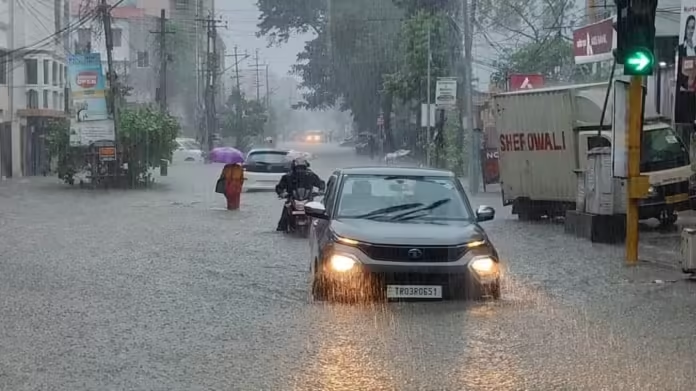Tripura faces the worst flooding in three decades, according to TIPRA Motha chief Pradyot Debbarma. Debbarma has voiced grave concerns about the situation, describing the intense rainfall as the heaviest in 30 years. The state has experienced a deluge of rain that has led to severe flooding, wreaking havoc across multiple villages and causing significant displacement.
The relentless downpour has inundated large areas, leaving many homes submerged. Roads and infrastructure have suffered substantial damage, further complicating relief efforts. The situation has forced thousands to evacuate their homes and seek refuge in temporary shelters.
Debbarma’s remarks highlight the severity of the crisis. “This is unprecedented. The scale of the flooding is beyond anything we have seen in recent history,” he said. The TIPRA Motha chief has called for immediate intervention and support from both the state and central governments to address the crisis.
The state’s response has involved deploying emergency services and relief teams to affected areas. Despite these efforts, the scale of the disaster has overwhelmed local resources. Floodwaters have disrupted daily life, making transportation and communication challenging. Villages have been cut off, and essential services have been disrupted, adding to the residents’ distress.
Relief efforts are underway, with teams working to provide food, clean water, and medical assistance to those in need. However, the extent of the damage has stretched resources thin. The situation remains dire as rescuers struggle to reach the most affected areas.
Debbarma has also emphasized the need for long-term solutions to mitigate such crises in the future. “We must invest in better infrastructure and flood management systems to protect our people and communities,” he added. The current situation underscores the importance of preparing for extreme weather events and ensuring that communities are resilient in the face of natural disasters.
The impact of the floods extends beyond immediate damage. The economic consequences are likely to be significant, with businesses and agricultural activities severely disrupted. The full extent of the economic toll will become clearer as recovery efforts progress.
In the meantime, the focus remains on providing immediate relief to those affected. The state government, along with various organizations, is working around the clock to address the urgent needs of the displaced population. Efforts include distributing essential supplies and setting up temporary shelters.
The floods have also drawn attention to the broader issue of climate change and its impact on weather patterns. The intensity and frequency of extreme weather events have been increasing globally, raising concerns about future disasters. In this context, the situation in Tripura serves as a stark reminder of the need for comprehensive climate action.
As Tripura grapples with this unprecedented flooding, the response from both local and national authorities will be crucial in determining the speed and effectiveness of the recovery process. The community’s resilience and the support from various agencies will play a key role in overcoming this challenging period.
The situation in Tripura remains fluid, with ongoing efforts to manage the crisis and provide relief to those affected. The coming days will be critical in assessing the full impact of the flooding and coordinating effective recovery strategies.
Tripura is facing its worst flooding in 30 years, with severe consequences for its residents. TIPRA Motha chief Pradyot Debbarma has highlighted the gravity of the situation, calling for immediate action and long-term solutions to address the crisis and prevent future occurrences.




